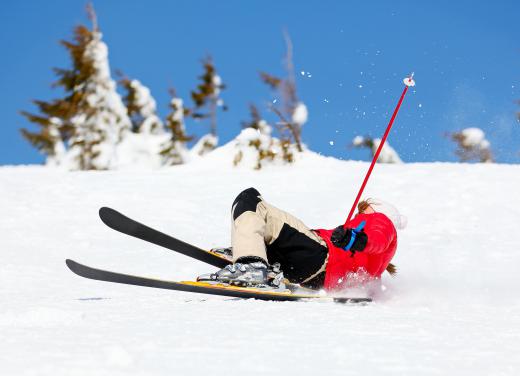A ski slope with a black diamond rating is said to be one of the more difficult slopes relative to others around it. When considering ski run categories, this symbol has traditionally been used for the most difficult, though in recent years a double black diamond designation has been implemented. No matter if it is a single or double, however, it will still be one of the more difficult trails at a particular resort.
It should be noted there is no national or international system for rating trails. It is up to each ski resort or ski area to determine their own classification system and the trails will be marked relative to other trails on the property. This can sometimes be confusing, and it is possible that a trail of similar length, width, and gradient will be marked differently at two different locations.

The black diamond is one of several ski run levels. Others include the green circle, generally regarded as the easiest trails for beginners, and the blue square, which is an intermediate trail. In Europe, the system is somewhat different. While the trails are marked by the same color, the shapes may or may not be used. Green is still the easiest, followed by blue and black as the difficulty increases.

As far as ski runs go, the most challenging should only be attempted by skiers who have a fair amount of experience and are comfortable traversing trails rated at lower levels of difficulty. Due to the fact there is no standardized rating system, it is always good for skiers to start out on a lower rated trail when skiing in an unfamiliar area. This will give him or her an idea of how the ratings may work for that particular location.

A ski slope rated as a black diamond will often be one of the steepest on the hill. It may also be narrower than most of the other trails, requiring more frequent hairpin turns in order to control speed and positioning. Hazards may include cliffs, trees and rocks. The trail may or may not be groomed, depending on the resort's practices.
A double black diamond course is sometimes even substantially more difficult than a single, and these courses may have extremely steep slopes and often are not groomed. It is up to the skier to traverse the mountain in a responsible way and those attempting a difficult who are not ready for it are subjecting themselves to risk of serious injury.
